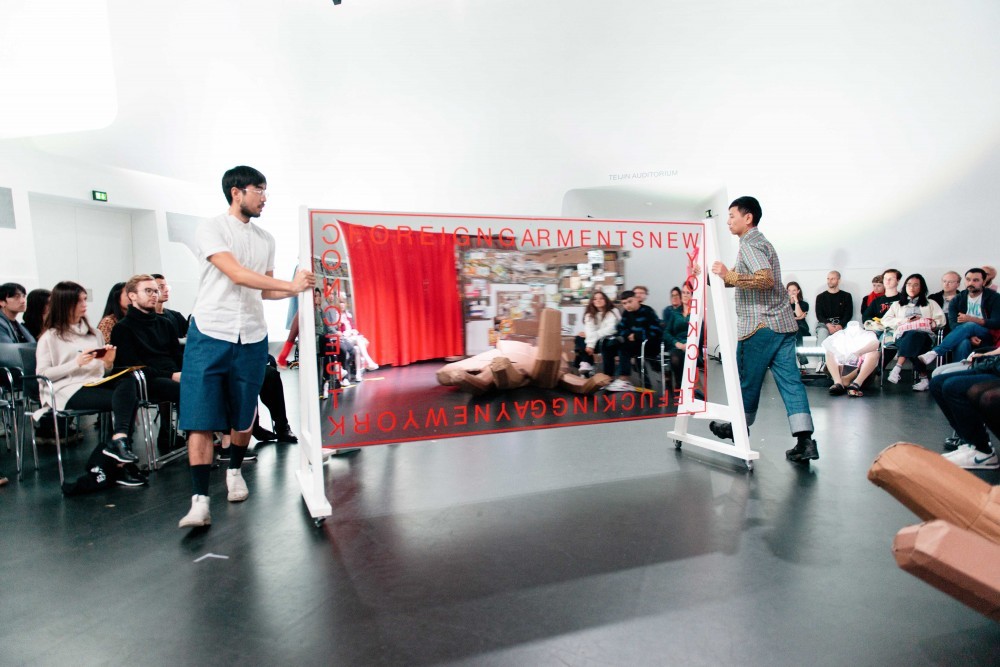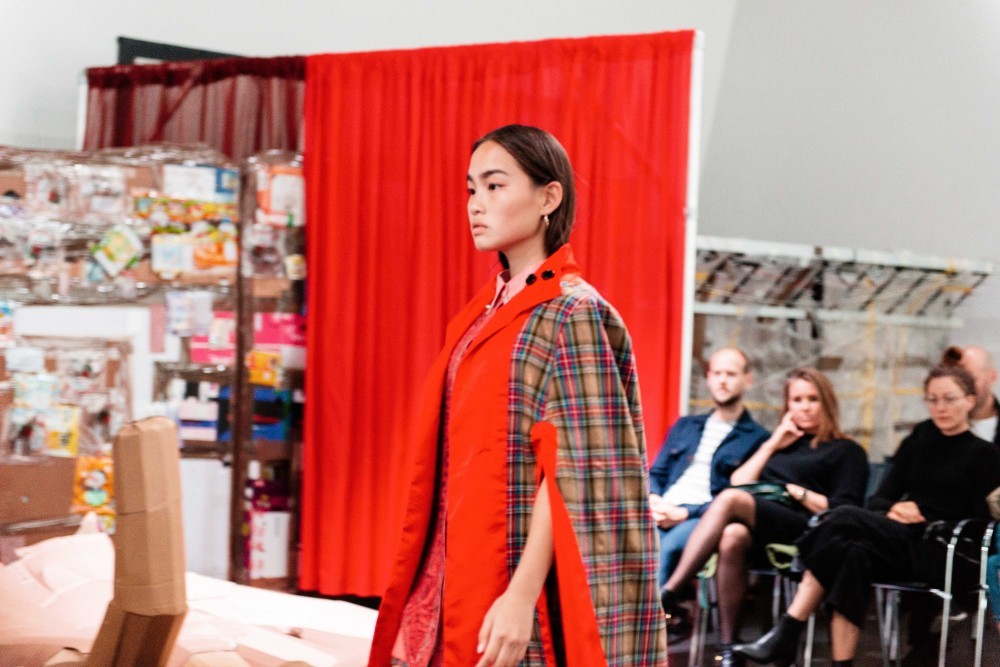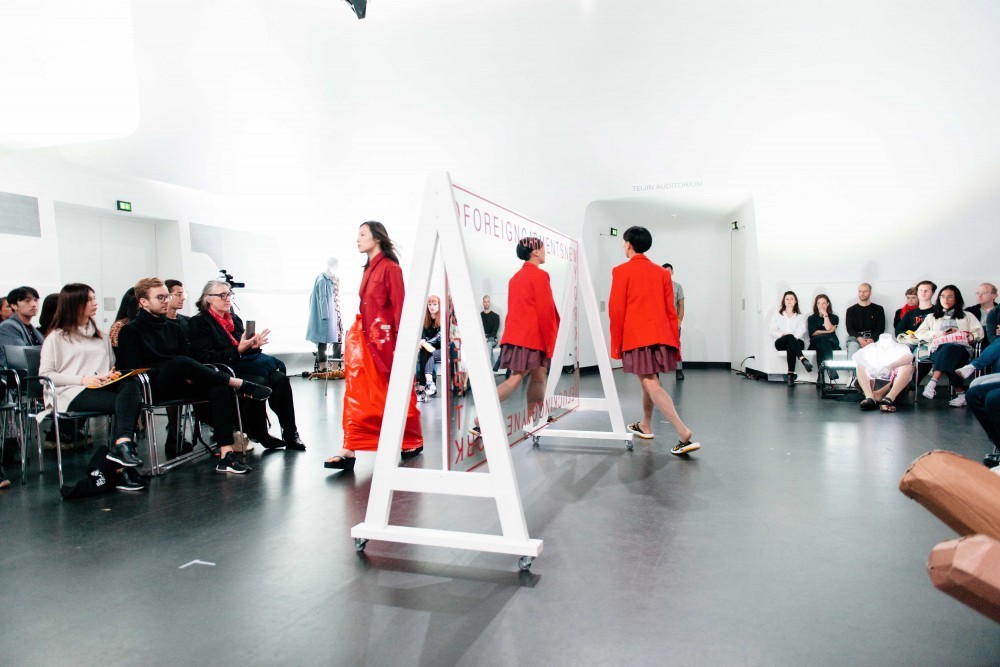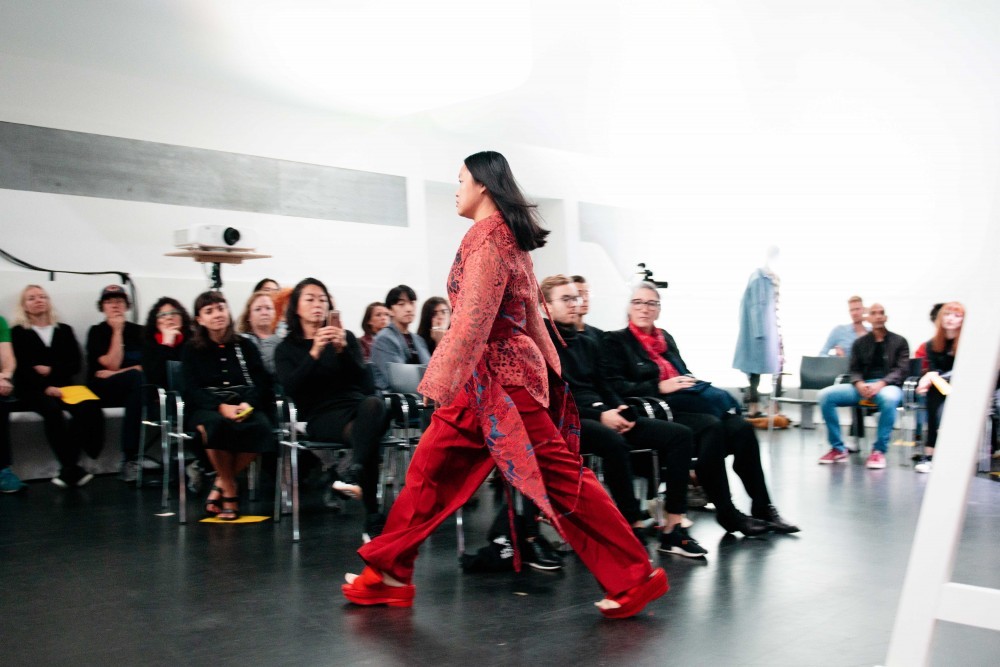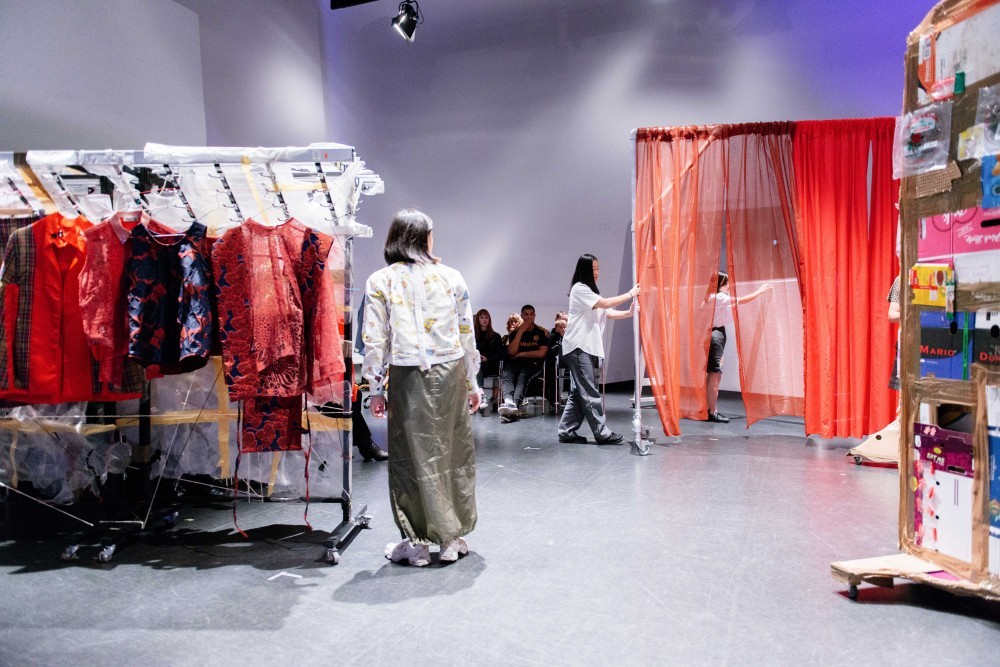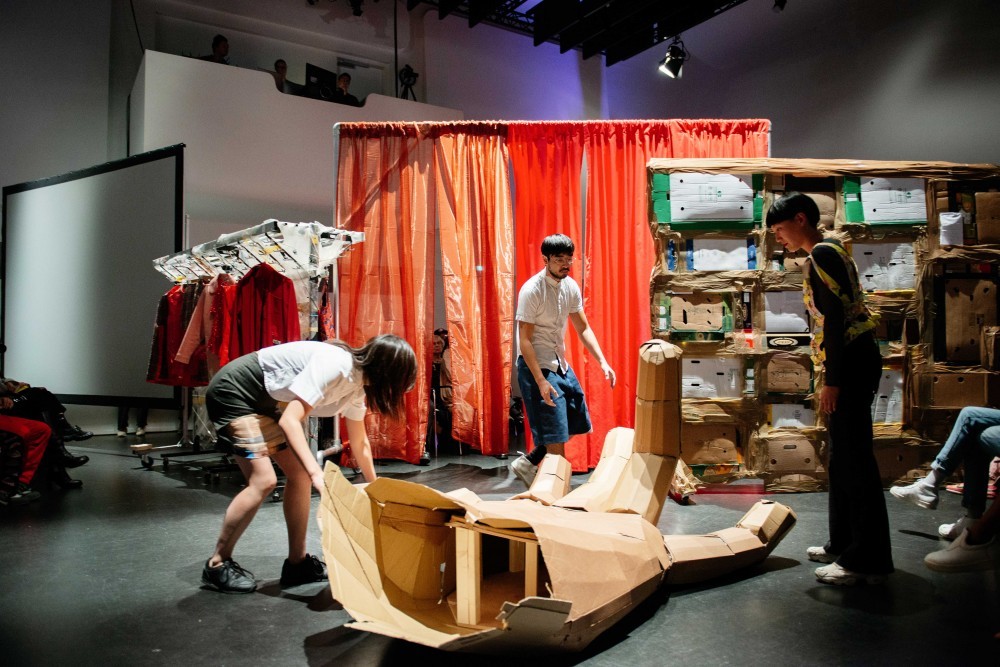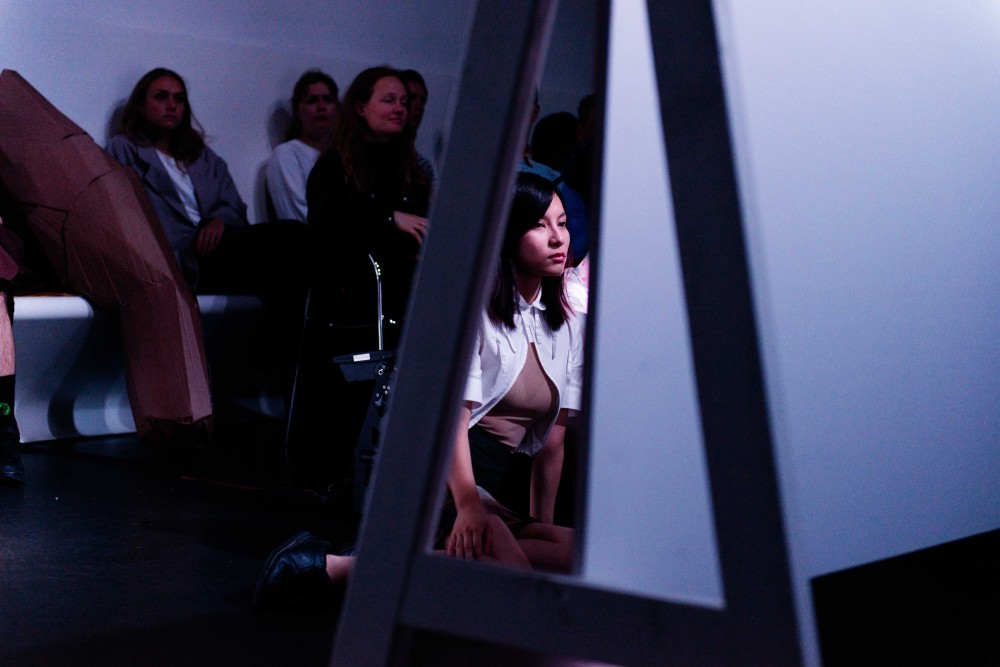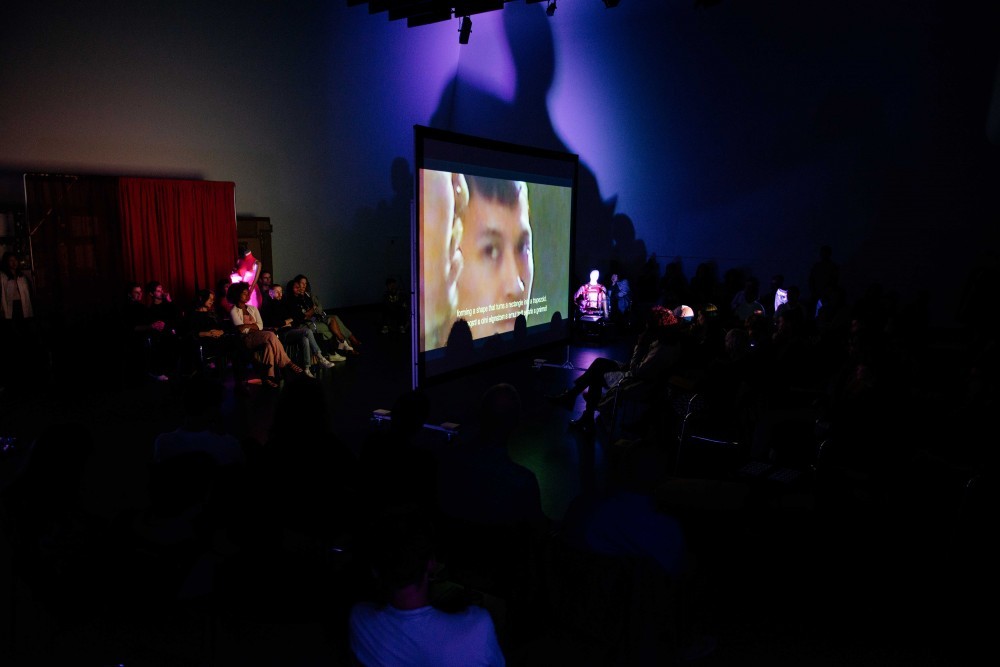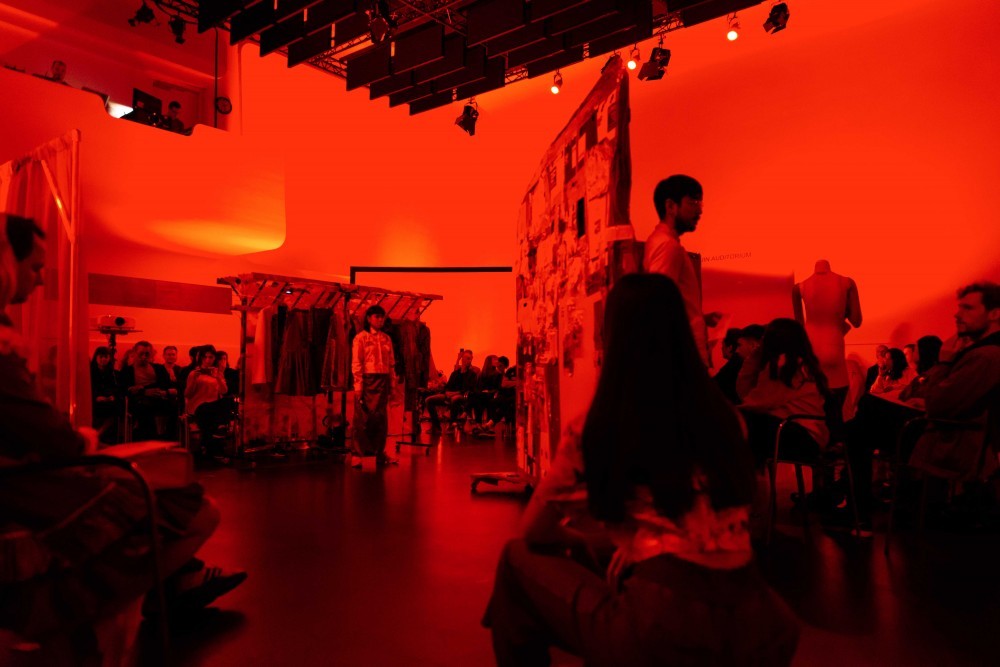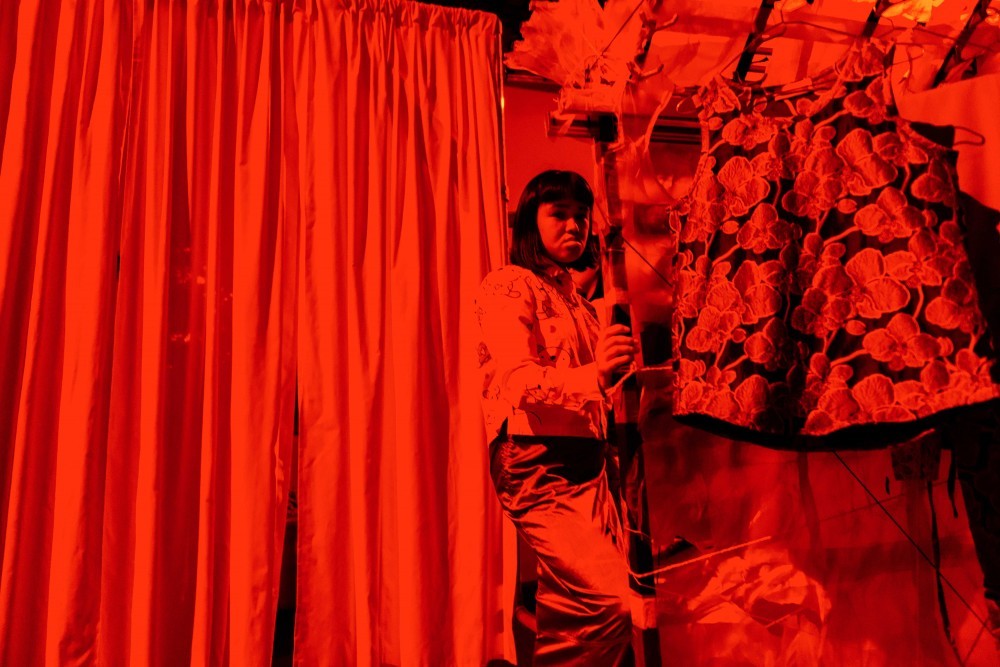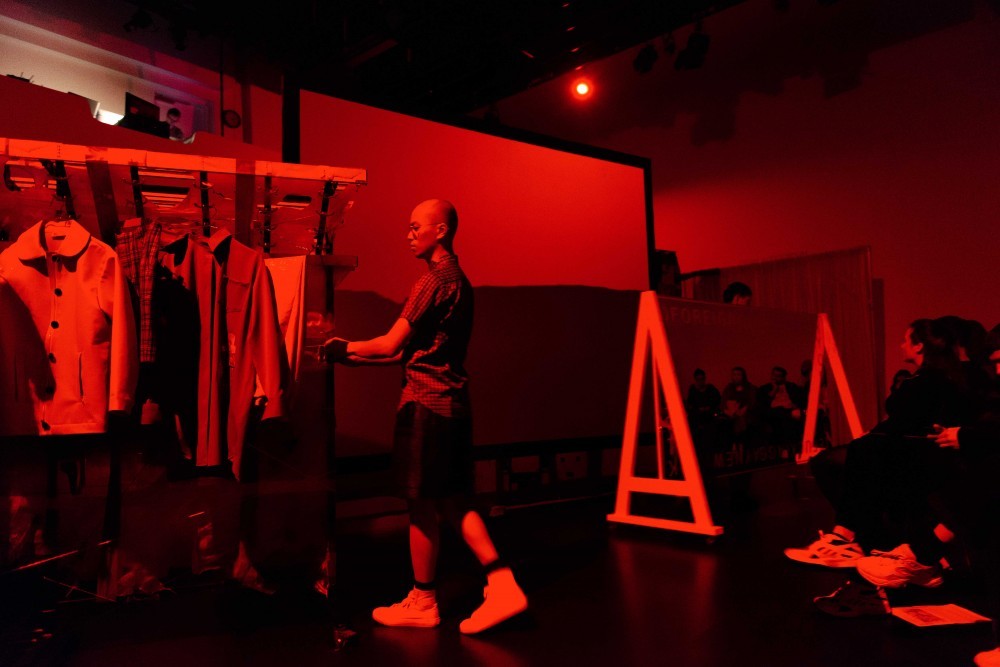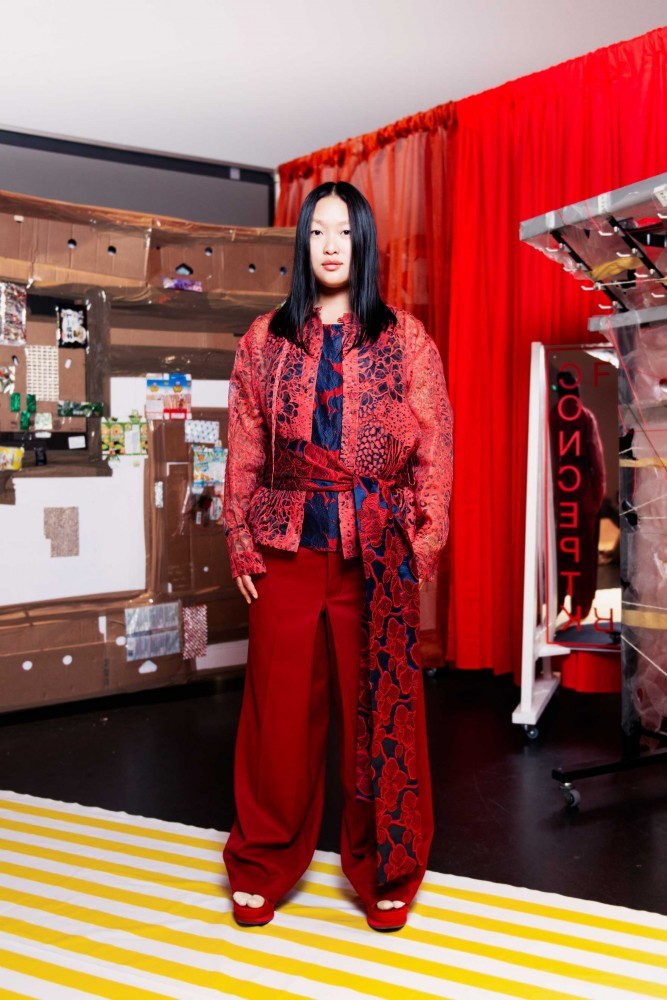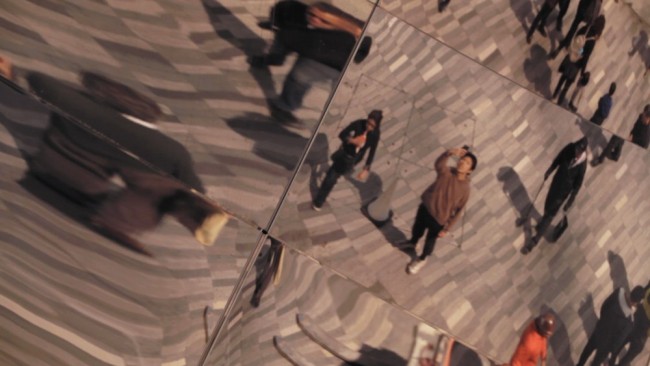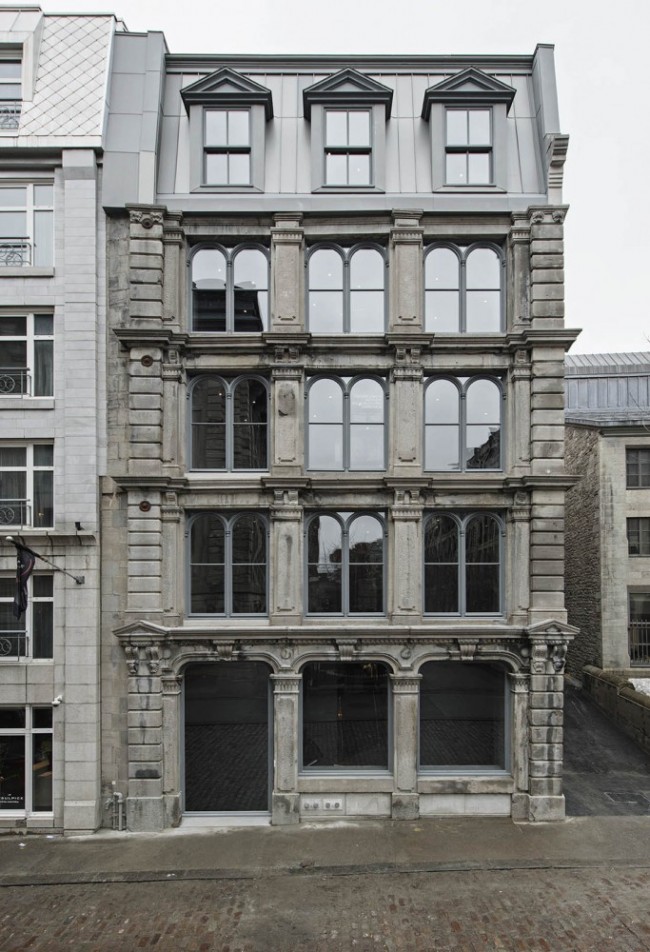FAKE FASHION: CFGNY’s State-sponsored Bootleg Runway Show Questions Ideas of Identity and Race
“Our project is about distorting the lines between what it means to be real or fake, authentic, or bootleg,” asserts Tin Nguyen. It is the day after his conceptual fashion label CFGNY (Concept Foreign Garments New York) debuted knock-off Prada, Balenciaga, Margiela, and Dior pieces at the Stedelijk Museum in Amsterdam. In the eyes of Nguyen and CFGNY’s co-founder Daniel Chew, the capsule collection of “fake” garments presented at the venerable Dutch museum followed a design process very similar to the European houses that inspired the pieces: copying or appropriating old designs to create new styles. While that analogy may rub the fashion industry the wrong way, CFGNY seeks to actively question threadbare Western assumptions that link artistic and material value with race. What about Asian identity evokes such implicit associations with illicit or second-rate goods, they ask.
-

Ashley Chin in Act V of Fake Fashion III. Performed at Stedelijk Museum Amsterdam, September 2018.
-

Sung Tieu and Tonya Sudiono in Act V of Fake Fashion III. Performed at Stedelijk Museum Amsterdam, September 2018.
-
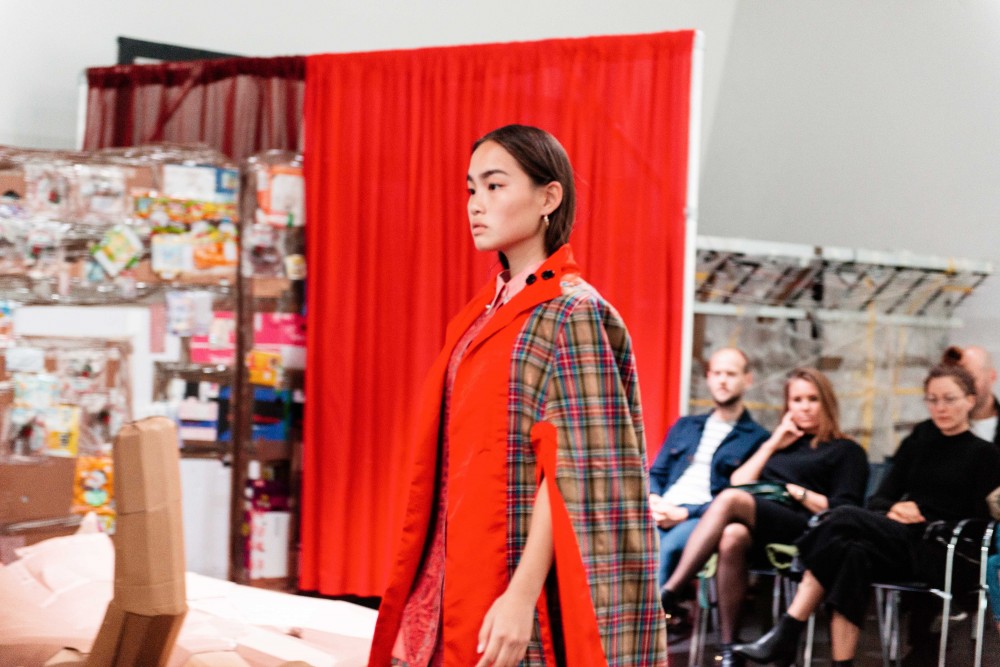
Karlijn Hu-Chuan Roest in Act V of Fake Fashion III. Performed at Stedelijk Museum Amsterdam, September 2018.
At the heart of Chew and Nguyen’s art-fashion collective’s work is the concept of “Vaguely Asian.” When asked about the terminology, Chew cites several things that imbue CFGNY’s work with elements of this slippery descriptor: the visual aesthetics that are bootlegged; the identity of the performers; and even the act of bootlegging itself. As Asian-Americans, Nguyen admits, “we have to deal with these associations in the negotiation of our identity — whether we like it or not.”
Both are also quick to point out these assumptions are not one-dimensional, or one-directional. They recall the miscommunication between themselves and the local tailors on their recent trip to Ho Chi Minh City to produce the collection. Perceiving Nguyen and Chew as “Western,” the tailors strove to produce items reflecting their notion of “Western style,” even as the two New Yorkers were precisely interested in the qualities that made the bootlegs “Asian.” To them the episode perfectly captures “the shifting way perspective influences how we think about race and value,” says Chew.
-
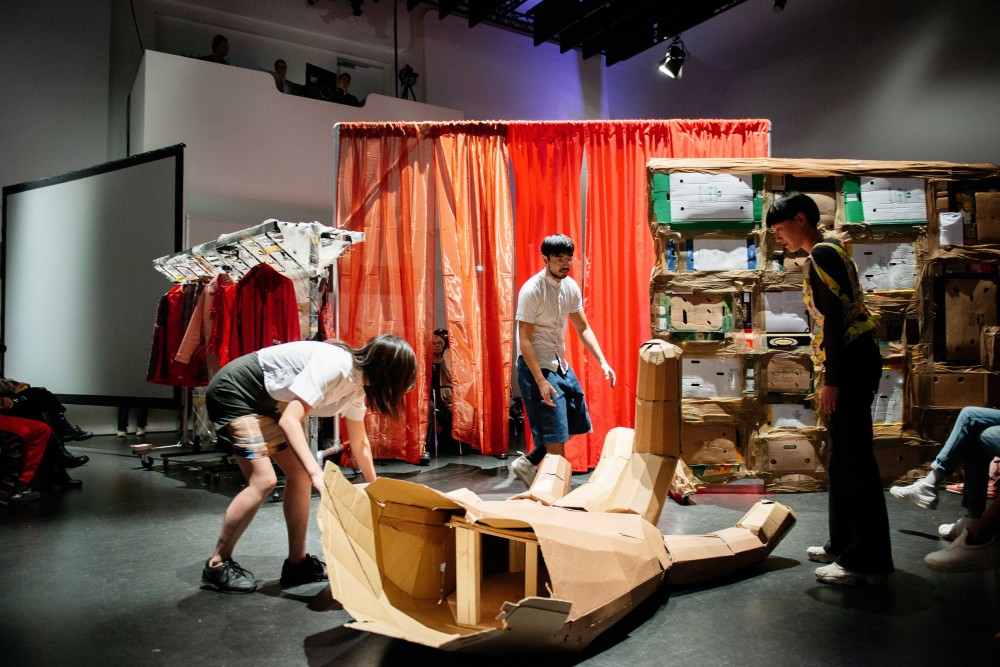
Sung Tieu, Daniel Chew, and Tonya Sudiono in Act IV of Fake Fashion III. Performed at Stedelijk Museum Amsterdam, September 2018.
-

Act III of Fake Fashion III. Performed at Stedelijk Museum Amsterdam, September 2018.
-

Karlijn Hu-Chuan Roest in Act IV of Fake Fashion III. Performed at Stedelijk Museum Amsterdam, September 2018.
-

Sung Tieu in Act II of Fake Fashion III. Performed at Stedelijk Museum Amsterdam, September 2018.
-

Irene Ha, Ashley Chin, and Sung Tieu in Act IV of Fake Fashion III. Performed at Stedelijk Museum Amsterdam, September 2018.
The sterile performance space the Stedelijk Museum is a far cry from the tight, second-floor gallery space in New York’s Chinatown where CFGNY debuted their collection in 2016. Seeing the collective’s more intimate, underground New York shows, Karen Archey — Stedelijk’s Curator of Contemporary Art for Time-Based Media — urged Chew and Nguyen to take a more performative approach by layering narratives about the production process into the runway show. Beyond the stunning scarlet-hued looks, the most striking aspect of the performance was the intricate choreography and manipulation of space in the otherwise non-descript auditorium (located in the museum’s recent Benthel Crouwel-designed addition, also dubbed “the bathtub”). Amid the movable wall pieces and unpredictable lighting, no one person saw exactly the same performance. “We situated the audience in groupings of chairs that were laid out haphazardly around the space, scrambling the logic of a black box theater,” Chew explains. “The person next to you might be facing a slightly different direction than the one you are facing, no one focal point present.” As inspiration for this scrambling of audience perspectives, the pair cites scholar Sarah Ahmed’s theory that to be “queer” or “raced” is to have a queer relationship to space, thereby oriented differently in comparison to a normative world. Presenting the collection at a leading European cultural institution, CFGNY subverts not only attendees’ assumptions about which garments deserve to be shown at such a venue, but also their expectation for clear runway sightlines. Recalling the word “bootleg,” Nguyen cleverly reminds me that “the term can also be used to describe something that is being misused, and we were in a sense trying to misuse the space.”
-
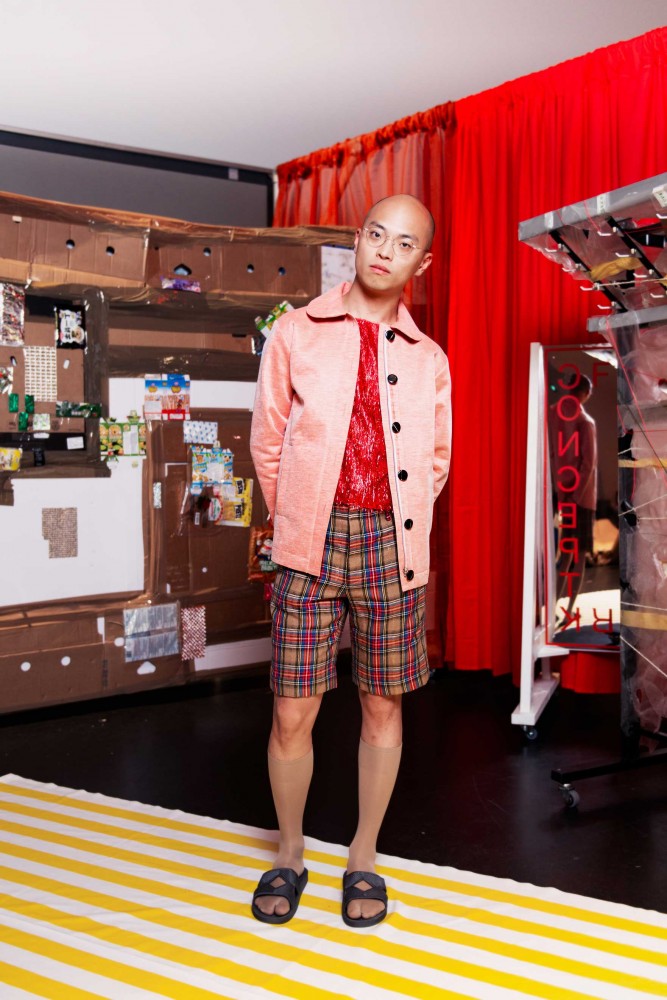
Eros Chien in Fake Fashion III Lookbook.
-

Karlijn Hu-Chuan Roest in Fake Fashion III Lookbook.
-
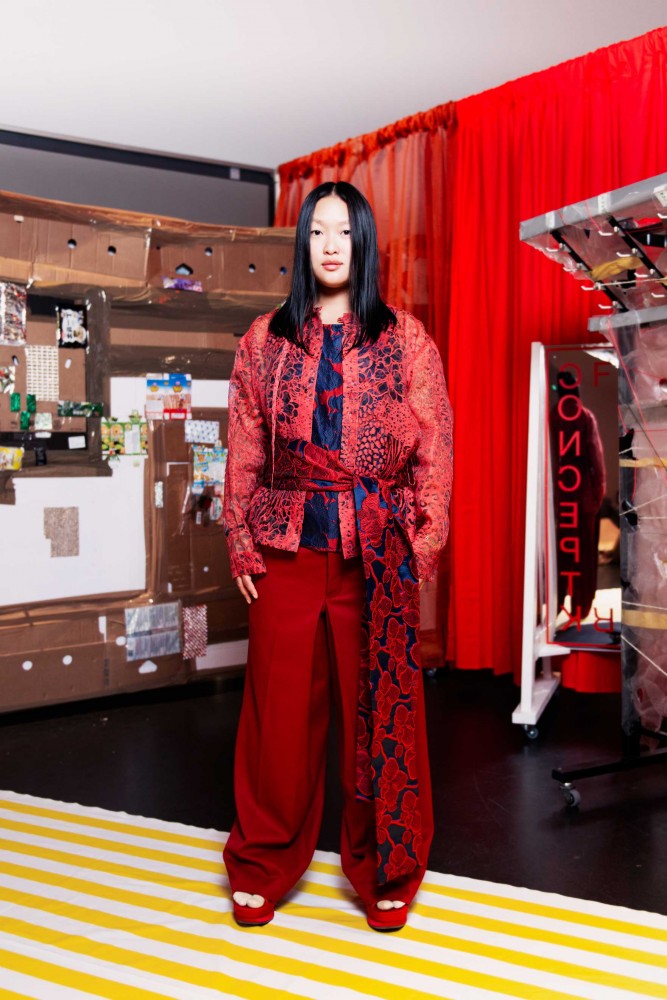
Ashley Chin in Fake Fashion III Lookbook.
-

Tonya Sudiono in Fake Fashion III Lookbook.
While the duo intentionally mixed-up audience perspectives across the hour-long performance, I was curious how the geo-cultural context of Amsterdam might alter viewers’ interpretation of an artistic project concerned with Asian-American identity. Admitting that the largely Dutch crowd likely would miss some nuance, Chew adds that “this too is a part of the performance: the mistranslations that can happen between the two different contexts.” In fact, dislocating CFGNY from the vibrant creative community of Asian Americans in New York to whom CFGNY gives voice made both “realize how much of the work we do is community building.” In Amsterdam they had to build a community from scratch. Recruiting performers via an open casting call Chew and Nguyen cooked dinner together with them, toured the city, rehearsed for days, and shared nuanced conversations about race. “We learned a lot about the Indonesian community in the Netherlands,” notes Nguyen. “The discourse here is very different, but in the end several performers told us how glad they were that we created a space” that allowed them to reflect on intersecting Dutch and Asian identities.
-

Eros Chien in Act I of Fake Fashion III. Performed at Stedelijk Museum Amsterdam, September 2018.
-
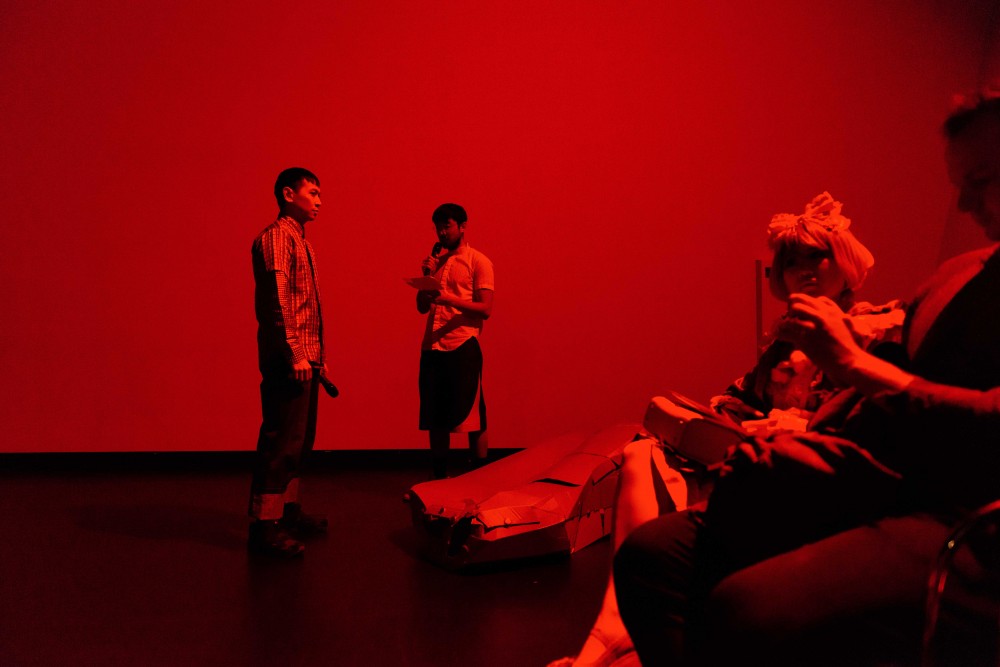
Tin Nguyen and Daniel Chew in Act I of Fake Fashion III. Performed at Stedelijk Museum Amsterdam, September 2018.
-

Irene Ha and Daniel Chew in Act I of Fake Fashion III. Performed at Stedelijk Museum Amsterdam, September 2018.
-

Irene Ha in Act I of Fake Fashion III. Performed at Stedelijk Museum Amsterdam, September 2018.
Whether or not people go on to purchase CFGYNY’s bootleg Balenciaga, the duo’s collections and performances ask that we start to unravel the “deep-seated intersecting associations of bootlegging and Asian identity.” Within the hierarchies of fashion, it is often not the tailoring or the garments themselves that drive our valuation — it is our sense of its origin that determines their worth.
Text by Andrew Pasquier for PIN–UP Online.
All images courtesy © 2018, Stedelijk Museum Amsterdam, photo Fabian Landewee.

